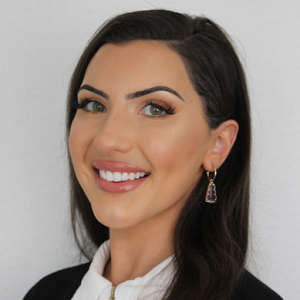The number 1 skin care ingredient that should be in all of our skin care routines is Vitamin A. Vitamin A is found in forms of retinoids. Scientifically proven to treat acne, wrinkles, pigmentation and scarring this hero topical ingredient could be the answer to many of your skin health concerns. Vitamin A is not naturally made in our body, so like all vitamins must be added in the diet or topical preparations. Vitamin A in skin care however has been studied since the 1960s when it was first used for acne treatment. It was then determined through extensive research and case studies that not only was Vitamin A treating the acne, it was also improving wrinkles, dark spots, skin elasticity and sagging.
At GVSL we commonly prescribe retinoids (vitamin A derivatives) as an essential ingredient in our client’s skin care regimes. With the many different products, names and derivatives of Vitamin A out there, it can be tricky for the everyday consumer to decide which one to use. This blog will outline exactly how to use the forms of retinoids to achieve optimal results, who should be using them, why we should use them and which one is going to be best suited to you!
Beta Carotene is an antioxidant that converts to Vitamin A, this then converts into Retinol, Retinol into Retinaldehyde, and Retinaldehyde into Retinoic Acid. The length of the conversion process of each retinoid will essentially determine its potency and the potency of the retinoid will ultimately determine the ability of what it can treat.
Retinyl palmitate → Retinol → Retinaldehyde → Retinoic Acid (Retin-A/Tretinoin)
WEAKEST <——————–> STRONGEST
Firstly, let us explain Retinoids and Vitamin A…
What are Retinoids?
Retinoids are a group of ingredients derived from Vitamin A which is one of the body’s key nutrients for boosting cell turnover. Retinoid is a chemical class so Retin-A and Retinol for example are just a form of Retinoid. Retinyl Palmitate, Retinol, Retinaldehyde and Retin-A are all related and part of the same ‘’family’’, Retinoids, yet they are different and knowing the difference is pivotal in achieving your desired skin health results.
Now, let’s break down the different forms of Retinoids, in order of potency…
What is Retinyl Palmitate?
Retinyl Palmitate is commonly seen in skin care products as it is much less irritating than its retinoid cousins. Again, this product will go through a conversion process. Once it’s absorbed into the skin, enzymes convert it to retinoic acid, the biologically active version that has the beneficial effects. Although Retinol and Retin-A also go through the conversion process, the process is much more direct and therefore those forms of retinoids are more effective in skin care than Retinyl Palmitate. Put simply, Retinyl Palmitate is the least effective out of all the retinoids but will be more comfortable to use consistently and continually. However, just because it is not as strong or effective does not mean it is doing nothing for your skin. You will still reap the benefits of stimulated collagen production, cell turnover and clear pores when using this product all whilst being easily tolerated by your skin. This form of vitamin A is commonly recommended for those with very sensitive skin or those whom have never used any form of retinoids before and are wanting to introduce their skin to the ingredient.
What is Retinol?
Retinol is the over the counter version of a Retinoid. It has a lower concentration of the retinoid and therefore can be less irritating on the skin, although as a general rule when starting any form of retinoids for the first time, do expect irritation to begin with. Retinol cannot be used by the body therefore it gets converted to retinoic acid which then binds to skin cell receptors and activates the product. As a general rule the more steps in the conversion process the weaker the retinoid is. Due to Retinols conversion process it can take 10-16 weeks of Retinol use before you will see results but you WILL see results eventually, it’s all about patience and consistency. Retinol is a good place to start if you are considering eventually jumping up to the more potent forms of vitamin A or have a younger skin beginning to notice the signs of aging.
What is Retinaldehyde or Retinal?
Retinaldehyde is the final stop before the hard stuff, it’s as strong of a retinoid as you can get without going into prescription-strength territory (Retin-A/Tretinoin). It only requires one conversion step before becoming retinoic acid, converting 11 times faster than Retinol and is therefore 20 times more potent. Retinaldehyde will repair connective tissue in the skin, boost collagen synthesis for anti-aging benefits, increases elasticity, balances sebaceous production and shrinks the skin’s pores to prevent them from getting clogged and inflamed. These benefits can be achieved with much less skin irritation than Retin-A.
What is Retin A?
Retin-A also known as Tretinoin is the prescription strength version of a retinoid in its purest form. Retin-A is retinoic acid and therefore it does not have to go through the conversion process like retinol so can be used directly by the skin with results being seen much quicker. Simply put, it is the most potent in the group of retinoids. However, this will come with greater side effects, in some cases comparable to a chemical peel when first used. Prescriptions of Retin-A can be prescribed in specific concentrations so results and amount of product being used can be tailored to your concern. This form of retinoid is very successful for the treatment of acne and aging skin that has been exposed to excessive amounts of sun. The irritation to the skin caused by Retin-A causes the cells of the skin to divide and die more rapidly, increasing cell turnover. Retin-A is very effective but must be tailored to the individual, the ‘’’strongest’’ version of something does not always mean it’s the best option for you.
Now let’s discuss how to use these retinoids…
- Avoid using any retinoid at the same time as products containing vitamin C, AHAs, or BHAs, as this can up the likelihood of sensitivity and irritation.
- Only use retinoids of a night time as it can increase skin sensitivity to the sun as well as the product can breakdown in UV light
- A pea sized amount is all that is necessary!
- Using more than a pea sized amount will not give you better or quicker results, I promise you
- Do not use if you are pregnant or breastfeeding
- Don’t forget your neck treat it as your second face
- Be prepared for unsightly side effects when using prescription strength: redness, peeling, dryness, flaking
- Patience and consistency are key
- Prescription strength 6-8 weeks to see true results
- Cosmetic strengths 10-12 weeks to see true results
- Depending on your skin and the type of retinoid you have been recommended, as a general guide for first timers:
- Begin incorporating the product two times per week for the first two weeks
- By week three you should be using your product every second night
- From week four onwards depending on skin tolerance apply your retinoid product every single night
Here is a list of the Retinoid products stocked at Geelong Veins Skin & Laser…
Prescription strength (Tretinoin) = Available to suitable candidates
Synergie Skin Ultimate A = Stabilised Retinol (stabilised form allows for Deeper penetration, increased stability and minimal irritation compared to regular non stabilised retinol)
Synergie Skin Acceler-A = Hydroxy pinacolone Retinoate (an ester of Retinoic Acid that does not go through conversion process)
Synergie Practitioner A+ = Hydroxy pinacolone Retinoate Practitioner Strength (an ester of Retinoic Acid that does not go through conversion process)
O Cosmedics Pure Age Defiance Serum = Retinyl Palmitate
O Cosmedics Potent Retinol Serum = Retinol 0.5% alcohol based
O Cosmedics Retinol Concentrate = Retinol 1%
O Cosmedics Retinoic Oil = Hydroxy pinacolone Retinoate (an ester of Retinoic Acid that does not go through conversion process)

To order a product or receive further information on a specific product please click the following link to send a Product Enquiry or call us on 5229 6866.
Authored by:

Charlotte Woolfe
